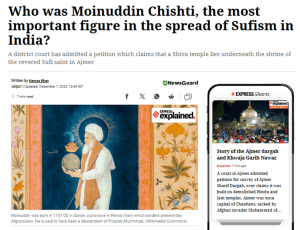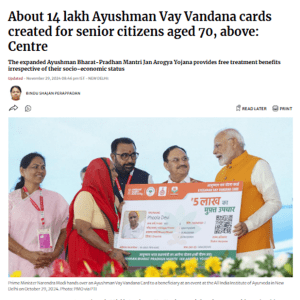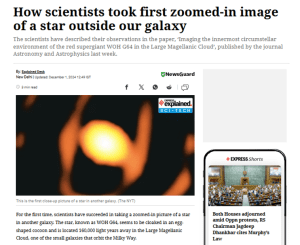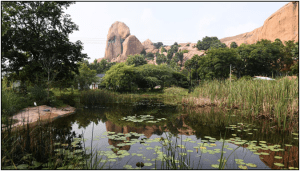DTRS-1
Quiz-summary
0 of 10 questions completed
Questions:
- 1
- 2
- 3
- 4
- 5
- 6
- 7
- 8
- 9
- 10
Information
DTRS
You have already completed the quiz before. Hence you can not start it again.
Quiz is loading...
You must sign in or sign up to start the quiz.
You have to finish following quiz, to start this quiz:
Results
0 of 10 questions answered correctly
Your time:
Time has elapsed
You have reached 0 of 0 points, (0)
Categories
- Not categorized 0%
- 1
- 2
- 3
- 4
- 5
- 6
- 7
- 8
- 9
- 10
- Answered
- Review
-
Question 1 of 10
1. Question
Q.1 Consider the following statements about the National Register of Indian Citizens (NRIC):
1. It is mandatory for all states and union territories to implement.
2. It requires verification of citizenship status for all individuals residing in India.
3. The Registrar General of India is responsible for the preparation of the NRIC.
Which of the statements given above are correct?Correct
Answer: B
Explanation:
Context:
Recently, the 2025 Census included an exercise to update the National Population Register (NPR), which is the first step in establishing the National Register of Indian Citizens (NRIC). Grasping the full scope and implications of this initiative is essential.
Statement 1 is incorrect: The National Register of Indian Citizens (NRIC) is not currently mandatory across all states and union territories. Its implementation depends on the decision of the Central Government. For instance, while the Citizenship Act, 1955 provides the legal framework for the NRIC, its applicability is subject to specific rules or notifications issued by the government.
Statement 2 is correct: The NRIC involves the verification of the citizenship status of all individuals residing in India. It is intended to create a database of Indian citizens by distinguishing citizens from non-citizens. This process typically involves checking documentation to prove citizenship.
Statement 3 is correct: The Registrar General of India (RGI), operating under the Ministry of Home Affairs, is responsible for overseeing the preparation and maintenance of the NRIC, as per the Citizenship Act, 1955, and the Citizenship (Registration of Citizens and Issue of National Identity Cards) Rules, 2003.
Source: https://www.thehindu.com/opinion/op-ed/census-2025-as-a-comprehensive-citizen-registry/article68922855.eceIncorrect
Answer: B
Explanation:
Context:
Recently, the 2025 Census included an exercise to update the National Population Register (NPR), which is the first step in establishing the National Register of Indian Citizens (NRIC). Grasping the full scope and implications of this initiative is essential.
Statement 1 is incorrect: The National Register of Indian Citizens (NRIC) is not currently mandatory across all states and union territories. Its implementation depends on the decision of the Central Government. For instance, while the Citizenship Act, 1955 provides the legal framework for the NRIC, its applicability is subject to specific rules or notifications issued by the government.
Statement 2 is correct: The NRIC involves the verification of the citizenship status of all individuals residing in India. It is intended to create a database of Indian citizens by distinguishing citizens from non-citizens. This process typically involves checking documentation to prove citizenship.
Statement 3 is correct: The Registrar General of India (RGI), operating under the Ministry of Home Affairs, is responsible for overseeing the preparation and maintenance of the NRIC, as per the Citizenship Act, 1955, and the Citizenship (Registration of Citizens and Issue of National Identity Cards) Rules, 2003.
Source: https://www.thehindu.com/opinion/op-ed/census-2025-as-a-comprehensive-citizen-registry/article68922855.ece -
Question 2 of 10
2. Question
Q.2 Consider the following statements regarding Khwaja Moinuddin Chishti:
1. He was a contemporary of Prithviraj Chauhan.
2. He rejected all material goods and advocated for connection with the state.
Which of the statements given above is/are correct?Correct

Answer: A
Explanation:
Context: Recently, Ajmer Sharif dargah was seen in the news which is the mausoleum of Khwaja Moinuddin Chishti (also spelt Muinuddin or Mu’in al-din), one of the most pivotal figures for the spread of Sufism in the subcontinent. Statement 1 is correct: Khwaja Moinuddin Chishti was a contemporary of Qutub-ud-din Aibak and Iltutmish. He arrived in Ajmer in 1191 AD during the reign of Prithviraj Chauhan. Statement 2 is incorrect: He rejected all material goods as distractions from the contemplation of God. Along with this he also abstained from patronage and connection with the state.
Additional information:
Moinuddin Chishti’s Arrival In India
· Moinuddin along with his follower Qutubuddin Bakhtiyar Kaki moved to Multan where he stayed for around five years, studying Sanskrit and talking to Hindu scholars.
· Later he moved to Lahore, then Delhi and finally Ajmer, the capital of the Chauhan kingdom under the rule of Prithviraj III during this time.
· After losing to the Muhammad of Ghor in the Second Battle of Tarain (present-day Haryana) in 1192, the Chauhan dynasty’s rule came to an end.
· Seeing the suffering in Ajmer, Moinuddin decided to stay on and help the city’s people. His generosity and amazing acts of selflessness earned Muinuddin the title of Gharib Nawaz, or friend of the poor.
· His teaching, emphasising on equality, divine love, and serving humanity transcended sectarian boundaries at a time when the subcontinent underwent Islamic conquest, and witnessed significant political upheaval.
· Among the Mughal emperors, Akbar in particular is said to have revered Moinuddin. He made several pilgrimages to the shrine, beautified Moinuddin’s mausoleum, and helped revive the city of Ajmer.
Emergence of Sufism in India: Chishti Order
· Sufism emerged between the 7th and 10th centuries CE as a counterweight to the increasing worldliness of the expanding Muslim community.
· Sufis embraced a more ascetic and devotional form of Islam, and often engaged in a variety of mystical practices.
· Eventually, Sufi practitioners came to be organised in various orders which congregated around the teachings of a certain teacher or wali.
· The Chishti order was founded in the 10th century by Abu Ishaq Shami in the town of Chisht near Herat. Later, Moinuddin and his disciples who led to its spread in the subcontinent.
Source: https://indianexpress.com/article/explained/who-was-moinuddin-chishti-the-most-important-figure-in-the-spread-of-sufism-in-india-9697979/Incorrect

Answer: A
Explanation:
Context: Recently, Ajmer Sharif dargah was seen in the news which is the mausoleum of Khwaja Moinuddin Chishti (also spelt Muinuddin or Mu’in al-din), one of the most pivotal figures for the spread of Sufism in the subcontinent. Statement 1 is correct: Khwaja Moinuddin Chishti was a contemporary of Qutub-ud-din Aibak and Iltutmish. He arrived in Ajmer in 1191 AD during the reign of Prithviraj Chauhan. Statement 2 is incorrect: He rejected all material goods as distractions from the contemplation of God. Along with this he also abstained from patronage and connection with the state.
Additional information:
Moinuddin Chishti’s Arrival In India
· Moinuddin along with his follower Qutubuddin Bakhtiyar Kaki moved to Multan where he stayed for around five years, studying Sanskrit and talking to Hindu scholars.
· Later he moved to Lahore, then Delhi and finally Ajmer, the capital of the Chauhan kingdom under the rule of Prithviraj III during this time.
· After losing to the Muhammad of Ghor in the Second Battle of Tarain (present-day Haryana) in 1192, the Chauhan dynasty’s rule came to an end.
· Seeing the suffering in Ajmer, Moinuddin decided to stay on and help the city’s people. His generosity and amazing acts of selflessness earned Muinuddin the title of Gharib Nawaz, or friend of the poor.
· His teaching, emphasising on equality, divine love, and serving humanity transcended sectarian boundaries at a time when the subcontinent underwent Islamic conquest, and witnessed significant political upheaval.
· Among the Mughal emperors, Akbar in particular is said to have revered Moinuddin. He made several pilgrimages to the shrine, beautified Moinuddin’s mausoleum, and helped revive the city of Ajmer.
Emergence of Sufism in India: Chishti Order
· Sufism emerged between the 7th and 10th centuries CE as a counterweight to the increasing worldliness of the expanding Muslim community.
· Sufis embraced a more ascetic and devotional form of Islam, and often engaged in a variety of mystical practices.
· Eventually, Sufi practitioners came to be organised in various orders which congregated around the teachings of a certain teacher or wali.
· The Chishti order was founded in the 10th century by Abu Ishaq Shami in the town of Chisht near Herat. Later, Moinuddin and his disciples who led to its spread in the subcontinent.
Source: https://indianexpress.com/article/explained/who-was-moinuddin-chishti-the-most-important-figure-in-the-spread-of-sufism-in-india-9697979/ -
Question 3 of 10
3. Question
Q.3 What is the primary purpose of the ‘Ayushman Vay Vandana card’ introduced under AB-PMJAY?
Correct

Answer: A
Explanation:
Context:
On November 25, 2024, the Government of India introduced Ayushman Vay Vandana Cards under the expanded Ayushman Bharat-Pradhan Mantri Jan Arogya Yojana (AB-PMJAY) to ensure free healthcare services for senior citizens aged 70 years.
· The ‘Ayushman Vay Vandana card’ is an initiative under the Ayushman Bharat – Pradhan Mantri Jan Arogya Yojana (AB-PMJAY) designed specifically for senior citizens aged 70 years or above.
· Its primary purpose is to expand free treatment benefits to senior citizens irrespective of their socio-economic status, ensuring universal access to quality healthcare in old age.
· It complements AB-PMJAY’s broader mission of providing financial protection against catastrophic health expenditures, particularly for vulnerable populations.
Key Features of Ayushman Vay Vandana Initiative:
Senior Citizen Focus:
Beneficiaries: Citizens aged 70 years and above.
Coverage: Approximately 14 lakh cards have been issued.
Healthcare Benefits:
Offers cashless treatment for 1,961 procedures across 27 medical specialties, such as:
General Medicine
General Surgery
Orthopedics
Cardiology
Oncology
Local Adaptability: States can customise health benefit packages to suit regional needs.
Empanelled Hospitals: 29,870 hospitals, including 13,173 private hospitals (as of October 31, 2024).
U-WIN Digital Platform:
Purpose:
Digitalisation of vaccination services under the Universal Immunisation Programme (UIP).
Focuses on pregnant women and children (birth to 16 years) against 12 vaccine-preventable diseases.
Implementation Status:
The nationwide rollout was completed after a pilot was done in 63 districts across 35 states/UTs.
Data (as of November 25, 2024):
7.43 crore beneficiaries registered
1.26 crore vaccination sessions held
27.77 crore vaccine doses administered
Key Features:
Anytime Access and Anywhere Vaccination Services
QR-based e-Vaccination Certificates
ABHA (Ayushman Bharat Health Account) and Child ABHA generation
Automated SMS alerts
Offline mode for data entry
Significance
Senior Citizens: Ensures access to critical healthcare for the elderly population, promoting inclusivity in public health schemes.
Public Health Digitisation: Platforms like U-WIN enhance the efficiency and outreach of immunisation programs.
Universal Healthcare: Initiatives align with India’s commitment to Universal Health Coverage (UHC) under the Ayushman Bharat Digital Mission (ABDM).
Way Forward
Awareness Campaigns: Ensure public awareness about the benefits of Ayushman Vay Vandana.
Monitoring: Strengthen oversight mechanisms for empanelled hospitals and service quality.
Integration: Seamlessly integrate digital platforms like U-WIN with other national health initiatives.
Hence, Option (a) is correct.
Source:
https://www.thehindu.com/sci-tech/health/about-14-lakh-ayushman-vay-vandana-cards-created-for-senior-citizens-aged-70-above-centre/article68927020.eceIncorrect



Answer: A
Explanation:
Context:
On November 25, 2024, the Government of India introduced Ayushman Vay Vandana Cards under the expanded Ayushman Bharat-Pradhan Mantri Jan Arogya Yojana (AB-PMJAY) to ensure free healthcare services for senior citizens aged 70 years.
· The ‘Ayushman Vay Vandana card’ is an initiative under the Ayushman Bharat – Pradhan Mantri Jan Arogya Yojana (AB-PMJAY) designed specifically for senior citizens aged 70 years or above.
· Its primary purpose is to expand free treatment benefits to senior citizens irrespective of their socio-economic status, ensuring universal access to quality healthcare in old age.
· It complements AB-PMJAY’s broader mission of providing financial protection against catastrophic health expenditures, particularly for vulnerable populations.
Key Features of Ayushman Vay Vandana Initiative:
Senior Citizen Focus:
Beneficiaries: Citizens aged 70 years and above.
Coverage: Approximately 14 lakh cards have been issued.
Healthcare Benefits:
Offers cashless treatment for 1,961 procedures across 27 medical specialties, such as:
General Medicine
General Surgery
Orthopedics
Cardiology
Oncology
Local Adaptability: States can customise health benefit packages to suit regional needs.
Empanelled Hospitals: 29,870 hospitals, including 13,173 private hospitals (as of October 31, 2024).
U-WIN Digital Platform:
Purpose:
Digitalisation of vaccination services under the Universal Immunisation Programme (UIP).
Focuses on pregnant women and children (birth to 16 years) against 12 vaccine-preventable diseases.
Implementation Status:
The nationwide rollout was completed after a pilot was done in 63 districts across 35 states/UTs.
Data (as of November 25, 2024):
7.43 crore beneficiaries registered
1.26 crore vaccination sessions held
27.77 crore vaccine doses administered
Key Features:
Anytime Access and Anywhere Vaccination Services
QR-based e-Vaccination Certificates
ABHA (Ayushman Bharat Health Account) and Child ABHA generation
Automated SMS alerts
Offline mode for data entry
Significance
Senior Citizens: Ensures access to critical healthcare for the elderly population, promoting inclusivity in public health schemes.
Public Health Digitisation: Platforms like U-WIN enhance the efficiency and outreach of immunisation programs.
Universal Healthcare: Initiatives align with India’s commitment to Universal Health Coverage (UHC) under the Ayushman Bharat Digital Mission (ABDM).
Way Forward
Awareness Campaigns: Ensure public awareness about the benefits of Ayushman Vay Vandana.
Monitoring: Strengthen oversight mechanisms for empanelled hospitals and service quality.
Integration: Seamlessly integrate digital platforms like U-WIN with other national health initiatives.
Hence, Option (a) is correct.
Source:
https://www.thehindu.com/sci-tech/health/about-14-lakh-ayushman-vay-vandana-cards-created-for-senior-citizens-aged-70-above-centre/article68927020.ece -
Question 4 of 10
4. Question
Q.4 With reference to the Centre for Processing Accelerated Corporate Exit (C-PACE), consider the following statements:
1. It is established by the Ministry of Agriculture & Farmers’ Welfare.
2. It aims to reduce the time required to complete the corporate exit process from the current two years to less than six months.
3. The initiative is aligned with India’s goal of improving its Ease of Doing Business rankings.
Which of the statements given above are correct?Correct



Answer: B
Explanation:
Context:
Recently, the central government informed the Lok Sabha that corporate exits are now happening in 70-90 days under the Centre for Processing Accelerated Corporate Exit (C-PACE).
Statement 1 is incorrect: C-PACE is established by the Ministry of Corporate Affairs (MCA) to facilitate and streamline the voluntary winding-up process of companies, providing a single-window system for processing corporate exits. C-PACE is in operation through the Registrar of Companies (RoC) for the purposes of exercising functional jurisdiction of processing and disposal of applications. It will work under the supervision of the Director General of Corporate Affairs (DGCoA). It was established to facilitate and speed up the voluntary winding up of companies to less than six months with process re-engineering.
Statement 2 is correct: The initiative significantly reduces the time taken for completing the winding-up process from approximately two years to less than six months. It has been set up to centralise the process of striking off companies from the MCA Register.
• Rules to remove company from the Registrar of Companies
o Section 248 of the Companies Act provides for the removal of the name of the company from the RoC if it is not carrying on any business or operation for a period of two immediately preceding financial years an
Statement 3 is correct: C-PACE is aligned with the Government of India’s objective to enhance the Ease of Doing Business. It is part of the Ministry of Corporate Affairs efforts towards ease of doing business and ease of exit for companies. It is located at the Indian Institute of Corporate Affairs in Gurgaon. It will reduce the burden on the registry and provide stakeholders with hassle-free filing, timely and process-bound striking off of their company’s names from the register.
Source:
https://www.business-standard.com/india-news/corporate-exits-now-happening-in-70-90-days-under-c-pace-says-govt-in-ls-124112700791_1.htmlIncorrect



Answer: B
Explanation:
Context:
Recently, the central government informed the Lok Sabha that corporate exits are now happening in 70-90 days under the Centre for Processing Accelerated Corporate Exit (C-PACE).
Statement 1 is incorrect: C-PACE is established by the Ministry of Corporate Affairs (MCA) to facilitate and streamline the voluntary winding-up process of companies, providing a single-window system for processing corporate exits. C-PACE is in operation through the Registrar of Companies (RoC) for the purposes of exercising functional jurisdiction of processing and disposal of applications. It will work under the supervision of the Director General of Corporate Affairs (DGCoA). It was established to facilitate and speed up the voluntary winding up of companies to less than six months with process re-engineering.
Statement 2 is correct: The initiative significantly reduces the time taken for completing the winding-up process from approximately two years to less than six months. It has been set up to centralise the process of striking off companies from the MCA Register.
• Rules to remove company from the Registrar of Companies
o Section 248 of the Companies Act provides for the removal of the name of the company from the RoC if it is not carrying on any business or operation for a period of two immediately preceding financial years an
Statement 3 is correct: C-PACE is aligned with the Government of India’s objective to enhance the Ease of Doing Business. It is part of the Ministry of Corporate Affairs efforts towards ease of doing business and ease of exit for companies. It is located at the Indian Institute of Corporate Affairs in Gurgaon. It will reduce the burden on the registry and provide stakeholders with hassle-free filing, timely and process-bound striking off of their company’s names from the register.
Source:
https://www.business-standard.com/india-news/corporate-exits-now-happening-in-70-90-days-under-c-pace-says-govt-in-ls-124112700791_1.html -
Question 5 of 10
5. Question
Q.5 With reference to WOH G64, recently in the news, consider the following statements:
1. It is a red supergiant star located within the Milky Way galaxy.
2. It is one of the largest known stars in the universe, with a radius over 2,000 times that of the Sun.
3. The discovery of WOH G64’s structure was made possible by combining ground-based and space-based telescopes.
Which of the statements given above is/are correct?Correct



Answer: B
Explanation:
Context:
Recently, for the first time, scientists have succeeded in taking a zoomed-in picture of the WOH G64 star which is located in another galaxy.
Statement 1 is incorrect: WOH G64 is located outside the Milky Way galaxy, specifically in the Large Magellanic Cloud, a satellite galaxy of the Milky Way. It was discovered in the 1970s by Bengt Westerlunds, Olander, and Hedin. Incidentally, the WOH in its name is the acronym for the names of its three discoverers. The star is believed to be around 1,60,000 light years away from Earth.
Statement 2 is correct: WOH G64 is indeed one of the largest stars known, with a radius over 2,000 times that of the Sun. It is classified as a red supergiant owing to its size, which is roughly 2,000 times that of the Sun. The new photo has revealed that WOH G64 is entering the last stages of its life. In recent years, the star has blown off its outer layer, and it is now surrounded by wreaths and arcs of gas and dust.
Statement 3 is correct: The recent breakthrough in imaging WOH G64 was achieved using the ALMA Observatory in Chile, combining ground-based observations with advanced imaging techniques. It is a massive star that has been imaged with remarkable sharpness by the European Southern Observatory’s Very Large Telescope Interferometer (ESO’s VLTI). It dwells in the Large Magellanic Cloud, a dwarf or satellite galaxy that orbits our Milky Way, which also happens to be one of the closest galaxies to us.
Source:
https://indianexpress.com/article/explained/explained-sci-tech/how-scientists-took-first-zoomed-in-image-of-star-outside-our-galaxy-9697983/Incorrect



Answer: B
Explanation:
Context:
Recently, for the first time, scientists have succeeded in taking a zoomed-in picture of the WOH G64 star which is located in another galaxy.
Statement 1 is incorrect: WOH G64 is located outside the Milky Way galaxy, specifically in the Large Magellanic Cloud, a satellite galaxy of the Milky Way. It was discovered in the 1970s by Bengt Westerlunds, Olander, and Hedin. Incidentally, the WOH in its name is the acronym for the names of its three discoverers. The star is believed to be around 1,60,000 light years away from Earth.
Statement 2 is correct: WOH G64 is indeed one of the largest stars known, with a radius over 2,000 times that of the Sun. It is classified as a red supergiant owing to its size, which is roughly 2,000 times that of the Sun. The new photo has revealed that WOH G64 is entering the last stages of its life. In recent years, the star has blown off its outer layer, and it is now surrounded by wreaths and arcs of gas and dust.
Statement 3 is correct: The recent breakthrough in imaging WOH G64 was achieved using the ALMA Observatory in Chile, combining ground-based observations with advanced imaging techniques. It is a massive star that has been imaged with remarkable sharpness by the European Southern Observatory’s Very Large Telescope Interferometer (ESO’s VLTI). It dwells in the Large Magellanic Cloud, a dwarf or satellite galaxy that orbits our Milky Way, which also happens to be one of the closest galaxies to us.
Source:
https://indianexpress.com/article/explained/explained-sci-tech/how-scientists-took-first-zoomed-in-image-of-star-outside-our-galaxy-9697983/ -
Question 6 of 10
6. Question
Q.6 Consider the following statements about the Aortic Stenosis:
1. It is a condition where the aortic valve of the heart becomes narrow, restricting blood flow from the heart to the rest of the body.
2. Symptoms include chest pain, fatigue, and breathlessness, particularly during physical exertion.
Which of the above statements is/are correct?Correct



Answer: C
Explanation:
Context:
A large population study indicates that insulin resistance may be an important risk factor for the development of heart valve disease — aortic stenosis.
Statement 1 is correct: Aortic Stenosis is a condition where the aortic valve becomes narrow or obstructed, leading to restricted blood flow from the heart’s left ventricle to the aorta and subsequently to the rest of the body.
Statement 2 is correct:
Symptoms of Aortic Stenosis:
Chest pain (angina): Due to reduced oxygen supply to the heart muscle.
Fatigue and weakness: Resulting from reduced blood flow to the body.
Breathlessness: Especially during physical exertion as the heart struggles to pump enough blood.
Other symptoms may include fainting or dizziness due to reduced blood flow to the brain.
Both statements are correct. So, option (c) is the correct answer.
Source:
https://epaper.thehindu.com/ccidist-ws/th/th_delhi/issues/109752/OPS/GNQDLHHPC.1+GK8DLJED0.1.htmlIncorrect



Answer: C
Explanation:
Context:
A large population study indicates that insulin resistance may be an important risk factor for the development of heart valve disease — aortic stenosis.
Statement 1 is correct: Aortic Stenosis is a condition where the aortic valve becomes narrow or obstructed, leading to restricted blood flow from the heart’s left ventricle to the aorta and subsequently to the rest of the body.
Statement 2 is correct:
Symptoms of Aortic Stenosis:
Chest pain (angina): Due to reduced oxygen supply to the heart muscle.
Fatigue and weakness: Resulting from reduced blood flow to the body.
Breathlessness: Especially during physical exertion as the heart struggles to pump enough blood.
Other symptoms may include fainting or dizziness due to reduced blood flow to the brain.
Both statements are correct. So, option (c) is the correct answer.
Source:
https://epaper.thehindu.com/ccidist-ws/th/th_delhi/issues/109752/OPS/GNQDLHHPC.1+GK8DLJED0.1.html -
Question 7 of 10
7. Question
Q.7 Which of the following statements best describes the term ‘Bromalites’, which was recently seen in the news?
Correct



Answer: B
Explanation:
Context:
New research using fossilized feces and vomit, known as bromalites, highlights how dinosaurs rose to dominance during the Triassic Period.
Bromalites are fossil traces of organisms, consisting of material from their digestive system.
They are the group of ichnofossils that record the consumption, processing, and elimination of material through digestive systems.
Each main stage of processing has been ascribed to distinct bromalite subgroups, with little evidence for transitions between these stages.
The most famous bromalites are fossilized feces, also known as coprolites.
However, other types are recognised, including: regurgitalites (fossilised remains of vomit or other regurgitated objects such as owl pellets); cololites (intestinal contents); and gastrolites (stomach contents).
Bromalites provide behavioural data including predation, scavenging, and vomiting.
They are important indicators of dietary habits and potential predator-prey relationships; therefore, they largely enhance our comprehension of trophic interactions.
Bromalites are often studied alongside other trace fossils to reconstruct ancient ecosystems.
Source:
https://www.devdiscourse.com/article/science-environment/3173408-unraveling-the-dino-dominance-the-bromalite-breakthroughIncorrect



Answer: B
Explanation:
Context:
New research using fossilized feces and vomit, known as bromalites, highlights how dinosaurs rose to dominance during the Triassic Period.
Bromalites are fossil traces of organisms, consisting of material from their digestive system.
They are the group of ichnofossils that record the consumption, processing, and elimination of material through digestive systems.
Each main stage of processing has been ascribed to distinct bromalite subgroups, with little evidence for transitions between these stages.
The most famous bromalites are fossilized feces, also known as coprolites.
However, other types are recognised, including: regurgitalites (fossilised remains of vomit or other regurgitated objects such as owl pellets); cololites (intestinal contents); and gastrolites (stomach contents).
Bromalites provide behavioural data including predation, scavenging, and vomiting.
They are important indicators of dietary habits and potential predator-prey relationships; therefore, they largely enhance our comprehension of trophic interactions.
Bromalites are often studied alongside other trace fossils to reconstruct ancient ecosystems.
Source:
https://www.devdiscourse.com/article/science-environment/3173408-unraveling-the-dino-dominance-the-bromalite-breakthrough -
Question 8 of 10
8. Question
Q.8 Consider the following statements about the Atmanirbhar Clean Plant Programme:
1. It aims to boost the production of disease-free, quality planting material for horticultural crops in India.
2. The program is implemented under the Ministry of Agriculture & Farmers Welfare.
3. It promotes the use of genetically modified crops to ensure clean and high-yield varieties.
Which of the statements given above is/are correct?Correct
Answer: B
Explanation:
Context:
Recently, the Government of India and the Asian Development Bank (ADB) signed a $98 million loan to improve horticulture crop farmers’ access to certified disease-free planting materials which aligns with India’s Atmanirbhar Clean Plant Programme.
Statement 1 is correct: The Atmanirbhar Clean Plant Programme aims to boost the production of disease-free and quality planting material for horticultural crops in India. It focuses on ensuring the availability of clean planting material to enhance productivity, improve crop quality, and reduce the spread of plant diseases.
Statement 2 is correct: The program is implemented under the Ministry of Agriculture & Farmers Welfare, which oversees various initiatives to improve agricultural practices and boost productivity in India.
Statement 3 is incorrect: The program does not promote genetically modified (GM) crops. Instead, it emphasizes producing clean, disease-free planting material using conventional methods, advanced diagnostic tools, and other sustainable techniques.
Additional information:
Atmanirbhar Clean Plant Programme:
It is designed to address critical issues in horticulture by providing access to high-quality, virus-free planting material.
The Program will aim to –
Enhance the yield of horticulture crops,
Disseminate and adopt climate resilient varieties,
Protect the ecosystem through proactive virus and disease control measures.
Components
Under this programme 9 world class state-of-the-art Clean Plant Centers (CPCs) equipped with advanced diagnostic therapeutics and tissue culture labs.
A robust certification system will be implemented to ensure thorough accountability and traceability in planting material production and sale.
It also prioritizes affordable access to clean plant material for all farmers, actively engages women farmers, and address the diverse agro-climatic conditions across India by developing region-specific clean plant varieties and technologies.
Implemented by: Ministry of Agriculture and Farmers Welfare through the National Horticulture Board (NHB) and the Indian Council of Agricultural Research.
Significance: The programme is poised to deliver numerous benefits across various stakeholders, from farmers to consumers, and bolster India’s position in the global fruit market.
What is the Asian Development Bank (ADB)?
· It is a multilateral development bank established on 19th December 1966. It is the principal international development finance institution for the Asia-Pacific region. It envisions a prosperous, inclusive, resilient, and sustainable Asia and the Pacific, while sustaining its efforts to eradicate extreme poverty in the region.
Source: Government of India and ADB sign $98 million loan to promote plant health management in India’s horticultureIncorrect
Answer: B
Explanation:
Context:
Recently, the Government of India and the Asian Development Bank (ADB) signed a $98 million loan to improve horticulture crop farmers’ access to certified disease-free planting materials which aligns with India’s Atmanirbhar Clean Plant Programme.
Statement 1 is correct: The Atmanirbhar Clean Plant Programme aims to boost the production of disease-free and quality planting material for horticultural crops in India. It focuses on ensuring the availability of clean planting material to enhance productivity, improve crop quality, and reduce the spread of plant diseases.
Statement 2 is correct: The program is implemented under the Ministry of Agriculture & Farmers Welfare, which oversees various initiatives to improve agricultural practices and boost productivity in India.
Statement 3 is incorrect: The program does not promote genetically modified (GM) crops. Instead, it emphasizes producing clean, disease-free planting material using conventional methods, advanced diagnostic tools, and other sustainable techniques.
Additional information:
Atmanirbhar Clean Plant Programme:
It is designed to address critical issues in horticulture by providing access to high-quality, virus-free planting material.
The Program will aim to –
Enhance the yield of horticulture crops,
Disseminate and adopt climate resilient varieties,
Protect the ecosystem through proactive virus and disease control measures.
Components
Under this programme 9 world class state-of-the-art Clean Plant Centers (CPCs) equipped with advanced diagnostic therapeutics and tissue culture labs.
A robust certification system will be implemented to ensure thorough accountability and traceability in planting material production and sale.
It also prioritizes affordable access to clean plant material for all farmers, actively engages women farmers, and address the diverse agro-climatic conditions across India by developing region-specific clean plant varieties and technologies.
Implemented by: Ministry of Agriculture and Farmers Welfare through the National Horticulture Board (NHB) and the Indian Council of Agricultural Research.
Significance: The programme is poised to deliver numerous benefits across various stakeholders, from farmers to consumers, and bolster India’s position in the global fruit market.
What is the Asian Development Bank (ADB)?
· It is a multilateral development bank established on 19th December 1966. It is the principal international development finance institution for the Asia-Pacific region. It envisions a prosperous, inclusive, resilient, and sustainable Asia and the Pacific, while sustaining its efforts to eradicate extreme poverty in the region.
Source: Government of India and ADB sign $98 million loan to promote plant health management in India’s horticulture -
Question 9 of 10
9. Question
Q.9 Consider the following statements about ‘ExerciseAgni Warrior- 2024’:
1. This was a joint military exercise between India and Singapore.
2. It commenced in Devlali (Maharashtra).
Which of the above statements is/are correct?Correct
Answer: C
Explanation:
Context: The 13th edition of Joint Military Exercise AGNI WARRIOR concluded recently.
Both the statements are correct.
Exercise Agni Warrior- 2024’
· The 13th edition of Joint Military Exercise AGNI WARRIOR (XAW-2024), a bilateral exercise between the Indian Army and Singapore Armed Forces, concluded at Field Firing Ranges, Devlali (Maharashtra) on 30th November 2024.
· The three-day exercise conducted from 28th to 30th November 2024, witnessed participation by the Singapore Armed Forces contingent comprising 182 personnel from the Singapore Artillery and the Indian Army contingent comprising 114 personnel from the Regiment of Artillery.
· The aim of XAW-2024 was to maximise mutual understanding of drills and procedures to achieve jointness as a multinational force under the United Nations Charter.
· The exercise showcased joint firepower planning, execution and use of New Generation Equipment by the Artillery of both Armies.
· The Exercise involved extensive joint preparation, coordination, understanding of each other’s capabilities, procedures and evolution of common interface between Indian and Singapore Artillery procedures.
· It marked the culmination of successful training by Singapore Armed Forces troops exposing them to intricacies of Fire Power planning. Both sides utilised niche technologies during the exercise and exchanged best practices as part of the joint training.
Source: https://pib.gov.in/PressReleasePage.aspx?PRID=2079355
Incorrect
Answer: C
Explanation:
Context: The 13th edition of Joint Military Exercise AGNI WARRIOR concluded recently.
Both the statements are correct.
Exercise Agni Warrior- 2024’
· The 13th edition of Joint Military Exercise AGNI WARRIOR (XAW-2024), a bilateral exercise between the Indian Army and Singapore Armed Forces, concluded at Field Firing Ranges, Devlali (Maharashtra) on 30th November 2024.
· The three-day exercise conducted from 28th to 30th November 2024, witnessed participation by the Singapore Armed Forces contingent comprising 182 personnel from the Singapore Artillery and the Indian Army contingent comprising 114 personnel from the Regiment of Artillery.
· The aim of XAW-2024 was to maximise mutual understanding of drills and procedures to achieve jointness as a multinational force under the United Nations Charter.
· The exercise showcased joint firepower planning, execution and use of New Generation Equipment by the Artillery of both Armies.
· The Exercise involved extensive joint preparation, coordination, understanding of each other’s capabilities, procedures and evolution of common interface between Indian and Singapore Artillery procedures.
· It marked the culmination of successful training by Singapore Armed Forces troops exposing them to intricacies of Fire Power planning. Both sides utilised niche technologies during the exercise and exchanged best practices as part of the joint training.
Source: https://pib.gov.in/PressReleasePage.aspx?PRID=2079355
-
Question 10 of 10
10. Question
Q.10 Arittapatti tungsten mines, seen in the news recently, are located in which one of the following states?
Correct



Answer: B
Explnation:
Context: Tamil Nadu government has requested the Prime Minister to cancel the tungsten mining rights awarded to a private company in Madurai district, considering the biodiversity heritage site in the proposed area.
About Arittapatti:
· Recently notified as Tamil Nadu’s first Biodiversity Heritage Site.
· Arittapatti consisting of a chain of seven barren granite hillocks and the distinctive landscape of rocky hills acts as a watershed, supporting 72 lakes, 200 natural spring pools, and three check dams.
It is loaded with everything from ancient Brahmi stones and 8th century Shaivite temples to around 250 species of birds and unique local traditions.
· It includes seven small hills – Kalinjamalai, Naattar Malai, Vayathupillan Malai, Ramayi Malai, Aptan Malai, Thenkoodu malai and Kazhugu malai – are rich in history and culture.
Ø Two Tamil Brahmi stone inscriptions found on natural caverns in Kalinjamalai date back to the 2nd century BCE. “They indicate that two persons or donors – Sizhivan Adhinan Veliyan of Nelveli (likely reference to Tirunelveli) and Ilanjivel Imayavan, son of Ilam Perathan, of Ilanchi village – had given shelter to the Jain monks at this cave.
· The avifaunal diversity here is rich enough to house around 250 species of birds and around 18 species of raptors (birds of prey) like – Laggar Falcon, Shaheen Falcon and Bonelli’s Eagle etc.
· Recently, Ministry of Mines declared Hindustan Zinc Limited as the preferred bidder of Nayakkarpatti tungsten block comprising six villages, including Arittapatti in Madurai.
Source: https://www.thehindu.com/news/national/tamil-nadu/tn-cm-stalin-urges-pm-modi-to-cancel-tungsten-mining-rights-awarded-to-private-firm-in-madurais-arittapatti/article68926210.eceIncorrect



Answer: B
Explnation:
Context: Tamil Nadu government has requested the Prime Minister to cancel the tungsten mining rights awarded to a private company in Madurai district, considering the biodiversity heritage site in the proposed area.
About Arittapatti:
· Recently notified as Tamil Nadu’s first Biodiversity Heritage Site.
· Arittapatti consisting of a chain of seven barren granite hillocks and the distinctive landscape of rocky hills acts as a watershed, supporting 72 lakes, 200 natural spring pools, and three check dams.
It is loaded with everything from ancient Brahmi stones and 8th century Shaivite temples to around 250 species of birds and unique local traditions.
· It includes seven small hills – Kalinjamalai, Naattar Malai, Vayathupillan Malai, Ramayi Malai, Aptan Malai, Thenkoodu malai and Kazhugu malai – are rich in history and culture.
Ø Two Tamil Brahmi stone inscriptions found on natural caverns in Kalinjamalai date back to the 2nd century BCE. “They indicate that two persons or donors – Sizhivan Adhinan Veliyan of Nelveli (likely reference to Tirunelveli) and Ilanjivel Imayavan, son of Ilam Perathan, of Ilanchi village – had given shelter to the Jain monks at this cave.
· The avifaunal diversity here is rich enough to house around 250 species of birds and around 18 species of raptors (birds of prey) like – Laggar Falcon, Shaheen Falcon and Bonelli’s Eagle etc.
· Recently, Ministry of Mines declared Hindustan Zinc Limited as the preferred bidder of Nayakkarpatti tungsten block comprising six villages, including Arittapatti in Madurai.
Source: https://www.thehindu.com/news/national/tamil-nadu/tn-cm-stalin-urges-pm-modi-to-cancel-tungsten-mining-rights-awarded-to-private-firm-in-madurais-arittapatti/article68926210.ece

